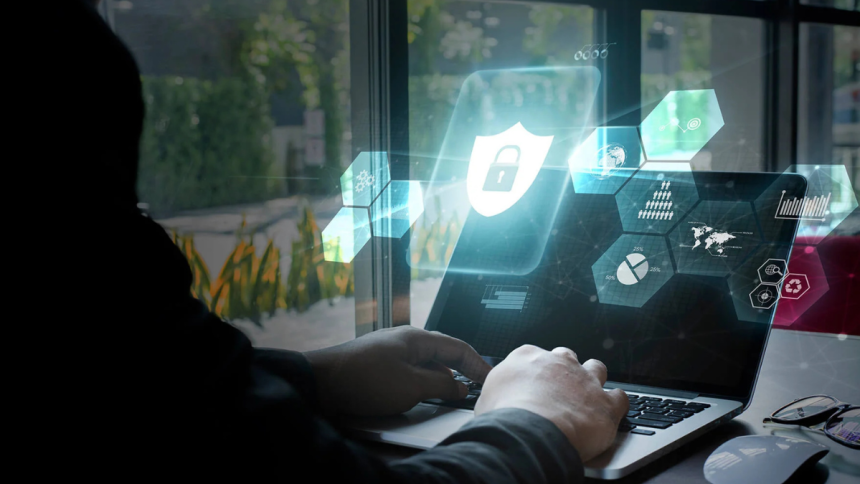EOR: The Foundation of Global IP Protection Strategy
Intellectual property protection has become the most critical challenge for companies operating remote global teams, making Employer of Record (EOR) services absolutely essential for safeguarding competitive advantages and proprietary assets. The distributed nature of modern workforces creates unprecedented vulnerabilities that can expose valuable intellectual property to theft, misappropriation, and unauthorized disclosure across multiple jurisdictions with varying levels of legal protection.
Employer of Record providers offer sophisticated IP protection frameworks specifically designed for remote global operations, providing comprehensive security measures that traditional employment arrangements cannot match. Unlike companies attempting to manage IP protection across multiple countries independently, EOR services deliver integrated security protocols, legal compliance frameworks, and risk mitigation strategies that protect intellectual property while enabling productive global collaboration.
The strategic importance of IP protection in remote global teams cannot be overstated—intellectual property often represents the core value proposition and competitive differentiation that drives business success. EOR providers understand that effective IP protection isn’t just about preventing theft; it’s about creating secure environments where innovation can flourish while maintaining the legal and technical safeguards necessary to preserve competitive advantages.
For companies building remote global teams, the complexity of IP protection across different legal systems, technological environments, and cultural contexts makes EOR services the only practical solution for comprehensive intellectual property security and compliance.
Understanding Global IP Vulnerabilities
Remote global teams create unique intellectual property vulnerabilities that require sophisticated protection strategies and comprehensive risk management approaches.
Distributed Access Risks
Remote work environments increase IP exposure through:
• Unsecured networks: Employees accessing company systems from public Wi-Fi and uncontrolled internet connections • Personal device usage: Work performed on personal computers, phones, and tablets with inadequate security • Home office vulnerabilities: Confidential work conducted in environments without enterprise-grade security controls • Cloud storage risks: Sensitive information stored on personal or unsecured cloud platforms
Cross-Border Legal Complexities
International operations complicate IP protection through:
• Varying IP laws: Different levels of intellectual property protection and enforcement across jurisdictions • Jurisdictional conflicts: Competing legal frameworks that create enforcement challenges • Cultural attitudes: Different societal views on intellectual property rights and business confidentiality • Enforcement limitations: Practical difficulties in pursuing IP violations across international boundaries
Technology and Communication Risks
Global collaboration creates vulnerabilities including:
• Data transmission security: Information shared across international networks and communication platforms • Multi-platform integration: Integration between different technology systems with varying security standards • Third-party service risks: Use of international collaboration tools and platforms with different privacy policies • Digital footprint exposure: Increased digital traces of intellectual property across multiple systems and countries
EOR IP Protection Framework
EOR providers address these vulnerabilities through:
• Comprehensive security protocols: Enterprise-grade security measures applied consistently across all global operations • Legal compliance coordination: Expert navigation of IP laws and requirements across multiple jurisdictions • Technology infrastructure: Secure platforms and systems designed specifically for protecting intellectual property • Risk monitoring and response: Continuous assessment and rapid response to potential IP security threats
EOR-Enabled Security Infrastructure
Employer of Record services provide sophisticated security infrastructure specifically designed to protect intellectual property in distributed global environments.
Enterprise-Grade Technology Security
EOR platforms typically include:
• Advanced encryption: Military-grade encryption for all data transmission and storage • Multi-factor authentication: Robust identity verification for all system access • Virtual private networks: Secure tunnels for all remote access to company systems and data • Endpoint protection: Comprehensive security software for all devices accessing company information
Access Control and Monitoring
Sophisticated access management includes:
• Role-based permissions: Granular control over who can access specific intellectual property • Activity logging: Comprehensive tracking of all access to and interaction with sensitive information • Real-time monitoring: Continuous surveillance of system usage and potential security threats • Automated alerts: Immediate notification of suspicious activities or potential security breaches
Data Loss Prevention
Advanced protection measures include:
• Content filtering: Automatic detection and blocking of attempts to transmit sensitive information • Digital watermarking: Invisible tracking embedded in confidential documents and files • Screen recording protection: Prevention of unauthorized screen captures or recordings • USB and device blocking: Control over external device usage and data transfer capabilities
Secure Collaboration Platforms
EOR providers offer:
• Proprietary communication tools: Secure platforms designed specifically for confidential business communication • Document management systems: Centralized repositories with comprehensive access controls and audit trails • Project management security: Protected environments for managing sensitive projects and intellectual property • Video conferencing protection: Encrypted communication platforms with advanced security features
Legal Framework and Compliance
EOR services provide comprehensive legal frameworks that ensure intellectual property protection complies with relevant laws and regulations across all jurisdictions.
International IP Law Navigation
EOR providers manage:
• Patent protection coordination: Ensuring inventions and innovations receive appropriate protection across relevant countries • Copyright compliance: Managing copyright ownership and licensing across different legal systems • Trade secret protection: Implementing legally compliant confidentiality measures in all jurisdictions • Trademark coordination: Protecting brand assets and intellectual property marks internationally
Employment Law Integration
Legal compliance includes:
• Work-for-hire agreements: Ensuring proper assignment of intellectual property rights from employees to companies • Confidentiality obligations: Comprehensive non-disclosure agreements that comply with local employment laws • Non-compete enforcement: Managing competitive restrictions within legal limitations of each jurisdiction • Invention assignment: Proper documentation and assignment of employee innovations and creations
Regulatory Compliance
EOR services ensure adherence to:
• Data protection regulations: Compliance with GDPR, CCPA, and other privacy laws affecting intellectual property • Export control laws: Managing technology transfer restrictions and international trade regulations • Industry-specific requirements: Specialized compliance for regulated industries like healthcare, finance, and defense • Government security clearances: Coordination of security clearances and classified information handling
Cross-Border Enforcement
EOR providers support:
• International litigation: Access to legal expertise for pursuing IP violations across borders • Treaty utilization: Leveraging international IP treaties and agreements for protection and enforcement • Alternative dispute resolution: Mediation and arbitration services for resolving IP disputes efficiently • Criminal enforcement: Coordination with law enforcement agencies for serious IP theft cases
Industry-Specific IP Protection
Different industries face unique intellectual property challenges that require specialized protection strategies and tailored EOR solutions.
Technology and Software Development
Tech companies require protection for:
• Source code security: Advanced protection for proprietary software and algorithms • Algorithm protection: Safeguarding artificial intelligence and machine learning innovations • Patent portfolio management: Comprehensive protection for technological innovations and inventions • Open source compliance: Managing the intersection of proprietary and open source software development
Pharmaceutical and Biotechnology
Life sciences organizations need:
• Research data protection: Securing clinical trial data and research findings • Compound and formula security: Protecting proprietary drug formulations and manufacturing processes • Regulatory compliance: Managing confidential information required for drug approval processes • Collaborative research: Protecting IP in joint ventures and research partnerships
Manufacturing and Industrial Design
Industrial companies require:
• Design specification protection: Securing product designs and manufacturing processes • Supply chain security: Protecting intellectual property shared with international suppliers • Quality control documentation: Safeguarding proprietary testing and quality assurance methods • Process innovation: Protecting manufacturing improvements and efficiency innovations
Financial Services and Fintech
Financial organizations need:
• Algorithm and model protection: Securing trading algorithms and risk assessment models • Customer data security: Protecting proprietary customer information and analytics • Regulatory compliance: Managing confidential information required for financial regulation compliance • Fraud prevention: Protecting proprietary fraud detection and prevention methodologies
Employee Education and Training
Effective IP protection requires comprehensive education and training programs that ensure all global team members understand their responsibilities and obligations.
Security Awareness Programs
Comprehensive training includes:
• IP identification: Teaching employees to recognize different types of intellectual property • Threat recognition: Training on common IP theft methods and security threats • Best practices: Detailed guidance on protecting intellectual property in daily work activities • Incident reporting: Clear procedures for reporting potential IP security issues or violations
Cultural Sensitivity Training
International considerations include:
• Local law awareness: Education about IP laws and enforcement in different countries • Cultural differences: Understanding varying attitudes toward intellectual property across cultures • Communication protocols: Secure methods for sharing confidential information across time zones • Emergency procedures: Response protocols for potential IP security incidents
Technology Training
Technical education covers:
• Security tool usage: Proper operation of VPNs, encryption, and other security technologies • Platform security: Safe usage of collaboration tools and communication platforms • Device management: Secure handling of company and personal devices used for work • Data handling: Proper procedures for storing, transmitting, and disposing of confidential information
Ongoing Education
Continuous learning includes:
• Regular updates: Periodic training on new threats and protection measures • Simulation exercises: Practice scenarios for responding to IP security incidents • Certification programs: Formal recognition for employees who complete security training requirements • Peer learning: Sharing best practices and lessons learned across global teams
Technology Solutions and Innovation
EOR providers leverage cutting-edge technology solutions to enhance intellectual property protection and provide advanced security capabilities.
Artificial Intelligence and Machine Learning
Advanced security technologies include:
• Behavioral analytics: AI systems that detect unusual patterns in employee behavior or system usage • Threat detection: Machine learning algorithms that identify potential security threats and IP violations • Automated response: AI-powered systems that automatically respond to detected security incidents • Predictive security: Technology that anticipates and prevents potential IP security issues
Blockchain and Distributed Ledger
Emerging technologies provide:
• Immutable records: Blockchain-based documentation of intellectual property creation and ownership • Timestamp verification: Cryptographic proof of when innovations and creations were developed • Access tracking: Distributed ledger systems for tracking intellectual property access and usage • Smart contracts: Automated enforcement of IP licensing and usage agreements
Advanced Encryption and Cryptography
Sophisticated protection includes:
• Quantum-resistant encryption: Future-proof security measures that protect against emerging quantum computing threats • Homomorphic encryption: Technology that allows computation on encrypted data without decryption • Zero-knowledge proofs: Cryptographic methods for verifying information without revealing sensitive details • Secure multi-party computation: Technology for collaborative work on sensitive data without exposing underlying information
Biometric and Identity Security
Advanced authentication includes:
• Biometric verification: Fingerprint, facial recognition, and other biological authentication methods • Behavioral biometrics: Systems that recognize users based on typing patterns and usage behaviors • Continuous authentication: Ongoing verification of user identity throughout work sessions • Risk-based authentication: Dynamic security measures that adjust based on assessed risk levels
Incident Response and Recovery
EOR services provide comprehensive incident response capabilities that minimize damage and facilitate rapid recovery from intellectual property security incidents.
Rapid Response Protocols
Immediate response includes:
• Incident detection: Automated systems that quickly identify potential IP security breaches • Containment procedures: Rapid isolation of affected systems and prevention of further damage • Assessment protocols: Quick evaluation of the scope and impact of security incidents • Communication plans: Coordinated notification of relevant stakeholders and authorities
Investigation and Analysis
Comprehensive investigation includes:
• Forensic analysis: Detailed technical investigation of security incidents and data breaches • Legal coordination: Integration with legal teams for potential litigation and law enforcement involvement • Impact assessment: Thorough evaluation of intellectual property compromised and business impact • Root cause analysis: Identification of underlying causes and prevention of similar incidents
Recovery and Remediation
Recovery processes include:
• System restoration: Rapid restoration of affected systems and services • Data recovery: Retrieval of any compromised or lost intellectual property • Security enhancement: Implementation of improved security measures based on lessons learned • Relationship repair: Communication and trust-building with affected stakeholders and customers
Prevention and Improvement
Long-term improvement includes:
• Security enhancement: Continuous improvement of protection measures based on incident learnings • Process refinement: Regular updating of policies and procedures based on threat evolution • Training updates: Enhanced education programs addressing newly identified vulnerabilities • Technology advancement: Investment in new security technologies and capabilities
The complexity and critical importance of intellectual property protection for remote global teams make EOR services essential for any company with valuable IP assets. Employer of Record providers offer the comprehensive security infrastructure, legal expertise, and advanced technology solutions necessary to protect intellectual property while enabling productive global collaboration and innovation.
Lynn Martelli is an editor at Readability. She received her MFA in Creative Writing from Antioch University and has worked as an editor for over 10 years. Lynn has edited a wide variety of books, including fiction, non-fiction, memoirs, and more. In her free time, Lynn enjoys reading, writing, and spending time with her family and friends.















